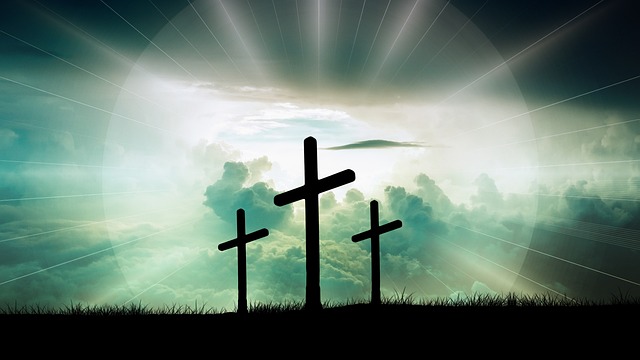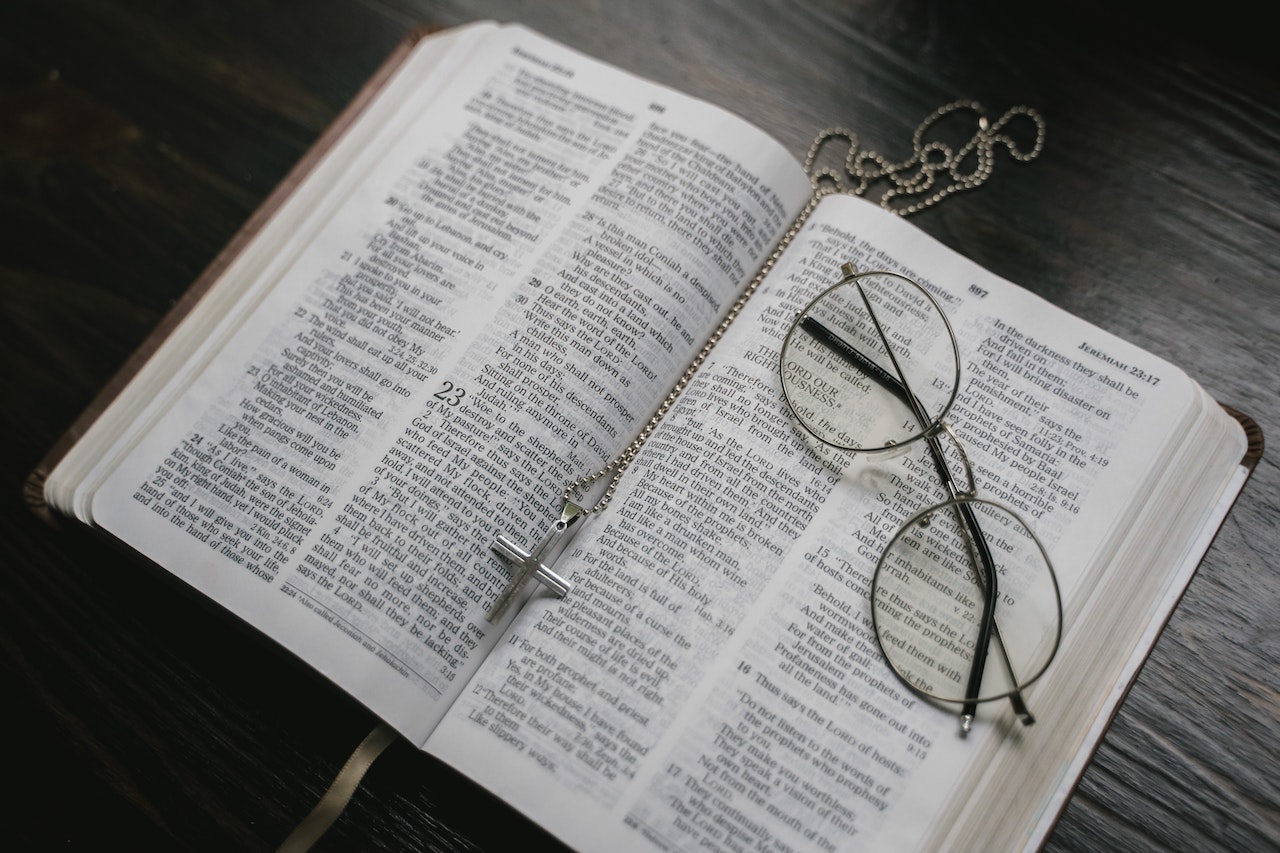Orthodox Christianity and Islam are two major world religions that have significant differences in their beliefs, practices, and historical development. While both religions share some common elements, such as monotheism and a belief in prophets, they diverge in terms of their understanding of God, religious texts, rituals, and theological doctrines. This introduction aims to provide a brief overview of the key differences between Orthodox Christianity and Islam, highlighting their distinct theological perspectives and cultural influences.
Table of Contents
The Origins and Historical Development of Orthodox Christianity and Islam
Orthodox Christianity and Islam are two major world religions that have shaped the course of history and influenced the lives of millions of people. Both religions have deep roots and a rich historical development that have shaped their beliefs, practices, and traditions. In this article, we will explore the origins and historical development of Orthodox Christianity and Islam, highlighting their similarities and differences.
Orthodox Christianity traces its origins back to the time of Jesus Christ and the apostles. It emerged as a distinct form of Christianity in the Eastern Roman Empire, with its center in Constantinople (modern-day Istanbul). The early Orthodox Church played a crucial role in the spread of Christianity, and its teachings were shaped by the early church fathers and ecumenical councils.
Islam, on the other hand, originated in the 7th century CE in the Arabian Peninsula. It was founded by the Prophet Muhammad, who received revelations from Allah (God) through the angel Gabriel. These revelations were later compiled into the holy book of Islam, the Quran. Islam quickly spread across the Arabian Peninsula and beyond, establishing a new religious and political order.
Both Orthodox Christianity and Islam have a strong emphasis on monotheism, believing in the existence of one God. However, they differ in their understanding of the nature of God. Orthodox Christianity believes in the Holy Trinity, consisting of God the Father, God the Son (Jesus Christ), and God the Holy Spirit. Islam, on the other hand, strictly adheres to the concept of tawhid, the oneness of God, rejecting the idea of the Trinity.
Another significant difference between the two religions lies in their religious texts. Orthodox Christianity considers the Bible, consisting of the Old and New Testaments, as its sacred scripture. The Bible is believed to be divinely inspired and serves as a guide for faith and practice. In contrast, Islam regards the Quran as the literal word of God, revealed to Muhammad. The Quran is considered the ultimate authority in matters of faith and practice for Muslims.
The historical development of Orthodox Christianity and Islam has also been shaped by political and cultural factors. Orthodox Christianity became the state religion of the Byzantine Empire, which greatly influenced its development and spread. The Byzantine Empire played a crucial role in preserving and transmitting the teachings of the early church fathers and in the development of liturgical practices.
Islam, on the other hand, spread rapidly through military conquests and trade networks. The early Islamic caliphates expanded their territories, establishing a vast empire that stretched from Spain to India. This expansion led to the blending of Islamic teachings with local cultures, resulting in the development of diverse Islamic traditions and schools of thought.
In conclusion, Orthodox Christianity and Islam have deep historical roots and have played significant roles in shaping the course of human history. While both religions share a belief in monotheism, they differ in their understanding of the nature of God and their sacred texts. The historical development of Orthodox Christianity was influenced by the Byzantine Empire, while Islam spread through military conquests and trade networks. Understanding the origins and historical development of these two religions is crucial in appreciating their beliefs, practices, and contributions to the world.
Key Beliefs and Doctrines in Orthodox Christianity and Islam

Orthodox Christianity and Islam are two major religions that have shaped the beliefs and practices of millions of people around the world. While they may have some similarities, they also have distinct differences in their key beliefs and doctrines. In this article, we will explore these differences and shed light on the core tenets of Orthodox Christianity and Islam.
Orthodox Christianity, also known as Eastern Orthodox Christianity, is a branch of Christianity that originated in the Eastern Roman Empire. It is characterized by its adherence to the teachings of Jesus Christ as passed down through the apostles and church fathers. The Orthodox Church places a strong emphasis on tradition and the authority of the Bible, as well as the teachings of the early church councils.
One of the key beliefs in Orthodox Christianity is the doctrine of the Holy Trinity. Orthodox Christians believe in one God who exists in three persons: the Father, the Son (Jesus Christ), and the Holy Spirit. This belief is central to their understanding of God’s nature and is often depicted in their religious artwork and icons.
Another important aspect of Orthodox Christianity is the veneration of saints and icons. Orthodox Christians believe that saints are holy individuals who have lived exemplary lives and are now in the presence of God. They believe that saints can intercede on their behalf and offer prayers to God. Icons, which are religious images, are also highly revered in Orthodox Christianity and are used as aids in worship and meditation.
In contrast, Islam is a monotheistic religion that was founded by the Prophet Muhammad in the 7th century CE. Muslims believe in the oneness of God, known as Allah, and follow the teachings of the Quran, which they believe to be the word of God as revealed to Muhammad. Islam places a strong emphasis on submission to the will of Allah and the practice of the Five Pillars of Islam.
One of the key beliefs in Islam is the concept of Tawhid, which is the belief in the oneness of God. Muslims believe that Allah is the only God and that there is no deity worthy of worship except Him. This belief is central to their understanding of monotheism and is the foundation of their faith.
Another important aspect of Islam is the belief in the prophethood of Muhammad. Muslims believe that Muhammad was the last and final prophet sent by Allah to guide humanity. They consider him to be the seal of the prophets and believe that his teachings, as recorded in the Quran and the Hadith (sayings and actions of Muhammad), are the ultimate source of guidance for all aspects of life.
While there are some similarities between Orthodox Christianity and Islam, such as their belief in monotheism and the importance of prayer, there are also significant differences in their key beliefs and doctrines. Orthodox Christianity places a strong emphasis on tradition, the authority of the Bible, and the veneration of saints and icons. Islam, on the other hand, emphasizes submission to the will of Allah, the belief in the prophethood of Muhammad, and the practice of the Five Pillars.
In conclusion, Orthodox Christianity and Islam are two major religions with distinct differences in their key beliefs and doctrines. While both religions share a belief in monotheism and the importance of prayer, they differ in their understanding of God’s nature, the role of tradition, and the practices of worship. Understanding these differences can help foster dialogue and promote mutual respect between followers of these two faiths.
Rituals, Practices, and Worship in Orthodox Christianity and Islam
Orthodox Christianity and Islam are two major religions that have shaped the lives of millions of people around the world. While they may have different beliefs and practices, both religions place a strong emphasis on rituals, practices, and worship. In this article, we will explore the similarities and differences between Orthodox Christianity and Islam in terms of their rituals, practices, and worship.
Rituals play a significant role in both Orthodox Christianity and Islam. In Orthodox Christianity, the Divine Liturgy is the central ritual. It is a sacred service that includes prayers, hymns, and the Eucharist. The priest, dressed in elaborate vestments, leads the congregation in worship. The use of icons, incense, and candles is also common in Orthodox Christian rituals, creating a visually rich and sensory experience.
Similarly, Islam has its own set of rituals that are integral to the faith. The most well-known Islamic ritual is the five daily prayers, known as Salah. Muslims face the Kaaba in Mecca while praying and recite verses from the Quran. The call to prayer, known as Adhan, is another important ritual in Islam. It is performed five times a day to remind Muslims of their duty to worship Allah.
While both religions have distinct rituals, they also share some common practices. For example, fasting is an important practice in both Orthodox Christianity and Islam. In Orthodox Christianity, fasting is observed during Lent, a period of 40 days leading up to Easter. During this time, believers abstain from certain foods and engage in prayer and reflection. Similarly, Muslims observe fasting during the holy month of Ramadan. From sunrise to sunset, they abstain from food, drink, and other physical needs as a way to purify the soul and develop self-discipline.
Another common practice in both religions is pilgrimage. In Orthodox Christianity, believers often make pilgrimages to holy sites such as Jerusalem, Mount Athos, or the Holy Sepulchre. These pilgrimages are seen as a way to deepen one’s faith and connect with the history and traditions of the religion. Similarly, Muslims are required to make a pilgrimage to Mecca, known as Hajj, at least once in their lifetime if they are physically and financially able. This pilgrimage is considered one of the Five Pillars of Islam and is a significant event in a Muslim’s life.
While there are many similarities in rituals and practices, there are also notable differences between Orthodox Christianity and Islam. One key difference is the role of clergy. In Orthodox Christianity, priests and bishops play a central role in leading worship and administering sacraments. They are seen as intermediaries between God and the congregation. In contrast, Islam does not have a hierarchical clergy. Muslims believe that every individual has a direct relationship with Allah and can communicate with Him through prayer.
Another difference lies in the use of religious texts. In Orthodox Christianity, the Bible is considered the holy scripture, and its teachings are central to the faith. The Quran, on the other hand, is the holy book of Islam and is believed to be the literal word of Allah as revealed to the Prophet Muhammad. Both texts are revered and studied, but they hold different positions in the respective religions.
In conclusion, while Orthodox Christianity and Islam have distinct rituals, practices, and worship styles, they also share common elements. Both religions place a strong emphasis on rituals, such as prayer and fasting, as a means of connecting with the divine. Pilgrimage is also an important practice in both faiths. However, differences in the role of clergy and the use of religious texts set these two religions apart. Despite these differences, both Orthodox Christianity and Islam provide their followers with a framework for spiritual growth and a means to express their devotion to God.
Comparative Analysis of Orthodox Christian and Islamic Art and Architecture
Orthodox Christianity and Islam are two major religions that have shaped the world in profound ways. Both religions have rich artistic and architectural traditions that reflect their beliefs and values. In this article, we will explore the similarities and differences between Orthodox Christian and Islamic art and architecture, highlighting their unique characteristics and contributions.
One of the most striking similarities between Orthodox Christian and Islamic art is their emphasis on intricate geometric patterns. Both traditions use geometric shapes and patterns to create visually stunning designs. In Orthodox Christian art, these patterns can be seen in the intricate mosaics that adorn churches and religious icons. Islamic art, on the other hand, is famous for its geometric patterns found in mosques, calligraphy, and decorative tiles. These patterns not only serve an aesthetic purpose but also symbolize the order and harmony found in the universe.
Another similarity between Orthodox Christian and Islamic art is their use of religious symbolism. Both traditions use symbols to convey spiritual and theological concepts. In Orthodox Christian art, icons play a central role. Icons are religious paintings that depict saints, biblical scenes, and other religious figures. These icons are believed to be windows into the divine and are venerated by Orthodox Christians. Similarly, Islamic art uses calligraphy and geometric patterns to convey religious messages. Arabic calligraphy, in particular, is highly regarded in Islamic art as it is used to write verses from the Quran, the holy book of Islam.
Despite these similarities, there are also notable differences between Orthodox Christian and Islamic art and architecture. One key difference lies in their portrayal of human figures. In Orthodox Christian art, human figures are depicted realistically, with an emphasis on natural proportions and facial expressions. This realistic portrayal of human figures is seen as a way to honor the incarnation of Christ and the importance of the human body. In contrast, Islamic art avoids the depiction of human figures, particularly in religious contexts. Instead, Islamic art focuses on abstract and geometric designs to avoid idolatry and to emphasize the transcendence of God.
Another difference can be seen in the architectural styles of Orthodox Christian churches and Islamic mosques. Orthodox Christian churches are known for their domes, arches, and elaborate frescoes. These churches often have a central dome that symbolizes the heavens and the presence of God. The interior of Orthodox Christian churches is adorned with colorful frescoes that depict biblical scenes and saints. In contrast, Islamic mosques are characterized by their minarets, domes, and prayer halls. Mosques are designed to facilitate communal prayer and often have a central prayer hall with a mihrab, a niche that indicates the direction of Mecca, the holiest city in Islam.
In conclusion, Orthodox Christian and Islamic art and architecture share some common elements, such as the use of intricate geometric patterns and religious symbolism. However, they also have distinct characteristics that reflect their respective beliefs and practices. Orthodox Christian art emphasizes the realistic portrayal of human figures and the use of icons, while Islamic art avoids human representation and focuses on calligraphy and geometric designs. Similarly, Orthodox Christian churches are known for their domes and frescoes, while Islamic mosques feature minarets and prayer halls. By understanding these similarities and differences, we can appreciate the unique contributions of both traditions to the world of art and architecture.
Conclusion
In conclusion, Orthodox Christianity and Islam are two distinct religious traditions with significant differences in their beliefs, practices, and historical development. While both religions emphasize monotheism and have a strong emphasis on faith, they differ in their understanding of God, the role of Jesus Christ, the authority of religious texts, and the practices of worship. Orthodox Christianity places a central focus on the Trinity, the divinity of Jesus Christ, and the sacraments, while Islam emphasizes the oneness of God, the prophethood of Muhammad, and the Five Pillars. These differences have shaped the distinct identities and practices of Orthodox Christianity and Islam, making them unique and separate religious traditions.



